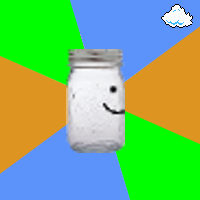Once again after getting fired up to write a slew of blog posts, I’ve disappeared off the face of the earth. Where did I go?
Well, it’s been an exciting year-or-so. Semester 2 of 2012 was very busy, and myself and various teams finished off various assignments for university. The large team software project (for which we were using agent-oriented programming and the Prometheus design methodology) went very well, and we won the award for best large team project at our expo night (out of three teams, but still).
Then I got to have a short break over Summer, but somehow snuck into being accepted for an internship with Google, and since Sydney was full, I got upgraded to the Googleplex in Mountain View! This is now without a doubt the highlight of my resume, and it was an enormously educational experience, especially since it was also my first ‘real’ overseas trip (that is, excluding New Zealand). I was working on upgrading an existing internal web application, which was definitely relevant to my interests, but unfortunately I can’t show anything off.
One of the most valuable things I learnt from working at Google is that I don’t want to work at Google. Yet. Without a doubt, it lives up to all the amazing stories you’ve heard and it’s perhaps as close to corporate paradise as a software developer will find, but I’m not at a point in my career that I want a corporate paradise. Despite all the free food and events and amazing people, I spent most of my time sitting at a desk writing code for other people. I learnt that I want to write code for myself; that I want to work on projects that are of total personal interest to me, and I want to direct their development.
Basically, I want to run a startup. So that’s what I’m going to do.
I’ve been watching Steve Blank’s How to Build a Startup course on Udacity, and it feels right. It feels like the kind of thing I want to do, and sits outside my comfort zone in the right way. I’m at a stage of my life that is ideal for taking this kind of risk: I have no job commitments, no family dependents, enough money to survive on, and most importantly, a project at uni with a good team that is starting to get off the ground, and the project owner is very keen to spin it off for commercialisation. I think it has real potential, so I’ll be working full-time next semester to build out the foundations a little more funded by a convenient government grant. It will be at least a year before it’s ready for sale, but I’m cautiously optimistic, and it deserves at least six months (of paid work!) to give it a go.
On top of that, I’m planning on reviving Buffex from its slumber on the side. This has come about for two reasons: I’ve been playing with Google’s Dart language and I’m liking it a lot; and a friend found the holy grail of open financial data sets on Quandl. That gives me everything I need, and it’s already coming along quite nicely. My goal is to launch an MVP for that in about 3 months of part-time work, though I haven’t done any scheduling yet, and that’s probably infeasibly aggressive. But I’ll definitely try to keep a record of the development lifecycle, as this is as likely as ever to be my first real self-driven product to come to market (with a business plan, anyway).
So I should be back on the air, but I won’t make any silly promises. I’m blogging because I know it’s a good habit to express one’s life story somewhere, even if nobody reads it. If nothing else, I’ll be back to read it in 50 years. Hopefully I didn’t let you down, future-me!


